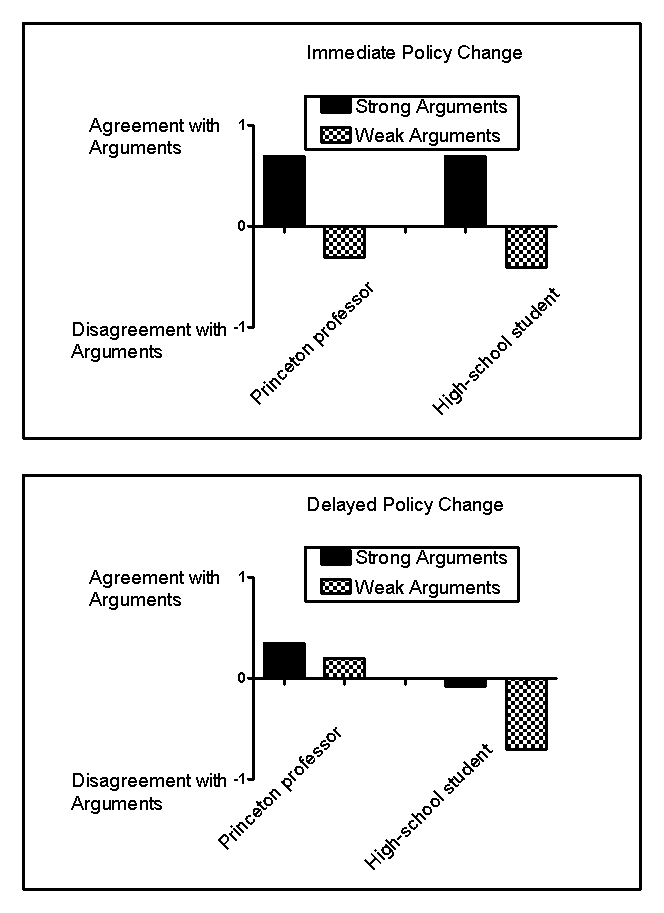Use the following to answer questions
Scenario II
The following scenario contains fabricated results consistent with the following study:
Petty,R.E. ,Cacioppo,J.T. ,& Goldman,R.(1981) .Personal involvement as a determinant of argument-based persuasion.Journal of Personality and Social Psychology,41,847-855.
Every day,consumers are exposed to scientifically based sales,marketing,and public relations strategies designed to influence purchasing decisions,change opinions,or win votes.One common sales strategy is the foot-in-the-door technique,a method that involves first making a smaller request that consumers are likely to grant and then following it with a larger request.Another common strategy is the door-in-the-face technique,which involves making an unreasonably large request that consumers will reject and then following it with a smaller request.When persuasion is necessary,it usually takes one of two forms: heuristic persuasion,which involves an appeal to habits or emotion,and systematic persuasion,which involves an appeal to facts and reason.Often,people will rely more on heuristics-simple shortcuts or "rules of thumb"-to make decisions instead of systematically weighing the evidence.
Petty and colleagues (1981) investigated some of these techniques in college students listening to arguments in favor of their college requiring an institution-level comprehensive final examination for graduation.Some students were led to believe that,if adopted,this policy would take place right away,and some were led to believe that the change would take place in a decade.In addition,some of the students were led to believe that they were listening to an argument from a Princeton professor,and others were led to believe that they were listening to an argument from a high-school student.Finally,some students heard strong arguments in favor of the policy,and some heard weak arguments.Thus,the experiment arranged six groups of students.For example,one group of students heard strong arguments from a high-school student about a far-removed policy change.Figure 13.1 shows fabricated results illustrating the major findings of this experiment.
Figure 13.1 
-(Scenario II) In the Petty and colleagues (1981) experiment,which example BEST describes a heuristic?
Definitions:
Sphygmomanometer
A device used to measure blood pressure, typically consisting of an inflatable cuff, a measuring unit (either mercury or aneroid), and a mechanism for inflation which may be manual or automatic.
False High
An inaccurately elevated measurement or reading, often due to procedural or equipment errors.
Hemoglobin
A protein in red blood cells responsible for carrying oxygen from the lungs to the rest of the body.
Sphygmomanometer
A tool designed for blood pressure assessment, featuring a cuff that can be inflated to constrict blood flow, along with a manometer to gauge the pressure.
Q15: Print ads for cars are more likely
Q44: The _ is a personality test that
Q50: According to the frustration-aggression hypothesis,frustration induces _,which
Q71: Which perspective focuses on anxiety as an
Q103: Chronic life stressors and brief life stressors
Q157: Trait theorists,who believe that personality traits reflect
Q167: Gloria is 10 years old and loves
Q247: Beautiful people,on average,earn _% more money over
Q264: Higher levels of stress do NOT cause:<br>A)arousal
Q307: A person's explicit knowledge of his or